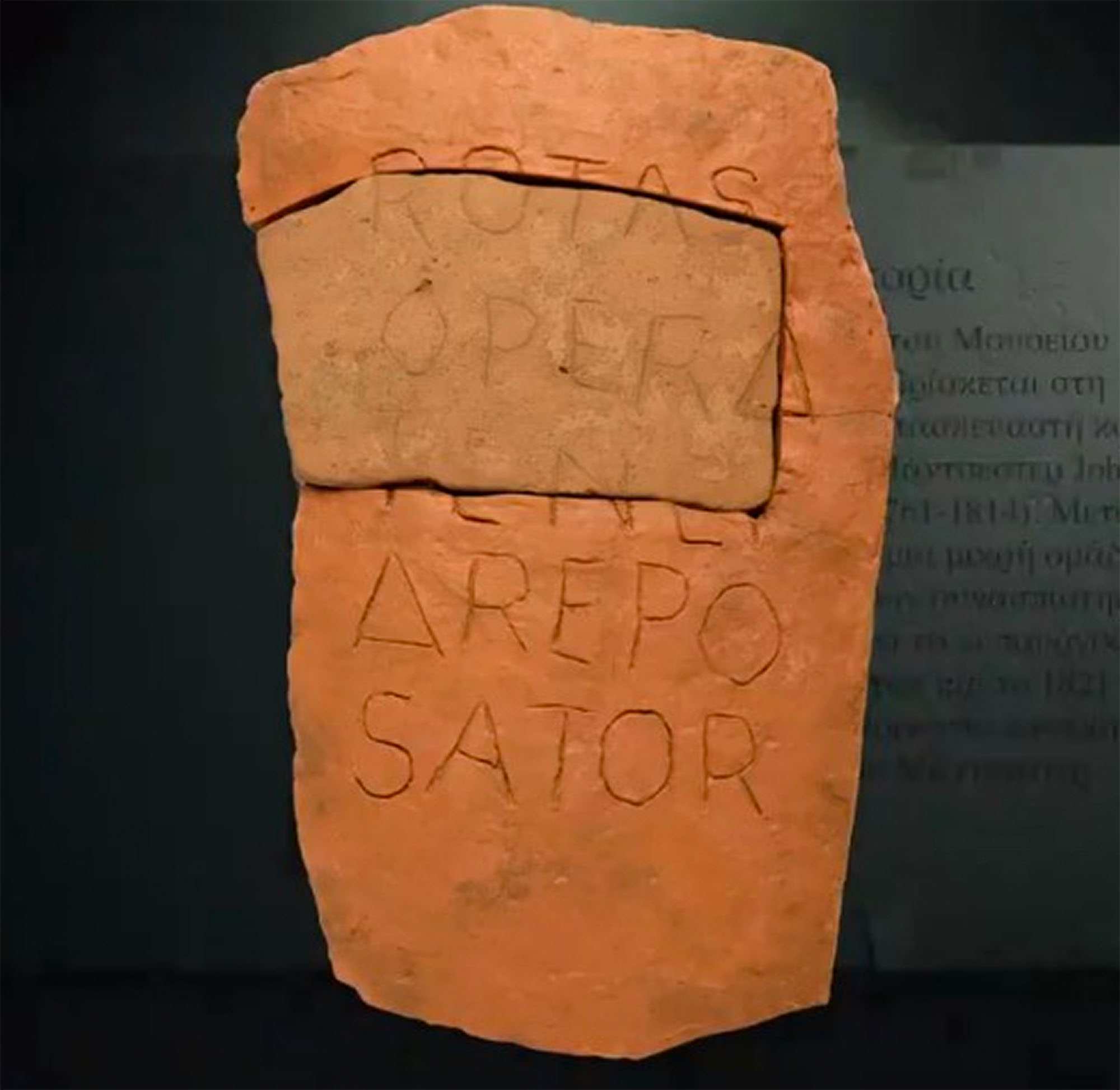
in Español / Spanish translated by Béré
This object has been translated into 6 different languages by 6 different users
Uno de los objetos más icónicos en nuestra colección de arqueología, es esta pieza de cerámica rota fue hallada en una excavación en el centro de Manchester.
Data de 180 AD. En ese entonces, Manchester era un asentamiento Romano llamado Mamucium, consistiendo en un fuerte – donde soldados vivían y la vida militar estaba organizada -, y un área civil que desarrollaba fuera del fuerte llamado Vicus. Se sabe que las tropas de extranjeros auxiliares que servían en el ejercito Romano eran las que venían a guarnecer el fuerte Mamucium. Vinieron de provincias de Alemania, Galia, Hispania… La multicultural Manchester que conocemos y amamos ya había pasado.
En el museo de Manchester tenemos objetos importantes que nos cuentan de los diferentes cultos en Manchester romano, y el Manchester Wordsquare es uno de ellos.
Esta fascinante inscripción Latina puede ser la evidencia más temprana del cristianismo en Norte Gran Bretaña. Dice ROTAS OPERA TENET AERPO SATOR o ‘arepo el sembrador guía el arado con cuidado’
Las palabras se leen igual en todas las direcciones. Reorganizadas las letras deletrean Pater Noster o ‘Nuestro Padre’, cruzando en la N. Esto omite las letras A y O. En la biblia, Jesús dijo: “Yo soy Alpha y Omega, el principio y el final.”
El Manchester Wordsquare puede haber usado como símbolo secreto, demostrando creer en el cristianismo en un tiempo en el que la iglesia cristiana era oprimida por las autoridades Romanas. Otros piensan que era un crucigrama o pasatiempo.
¿Qué piensas tu?
Translated by Béré (from Argentina)
Do you have something you’d like to say, in your own language or English, about the object or translation? We’d like to hear what you think.
Translations are community-sourced and for anyone to participate in, however you use your language. For more information, see Community Guidelines.
17 Nov, 2023
曼城文字魔方阵, very good, thank you
11 Apr, 2023
The first known version of this square is in Pompeii, and there is a Facebook image from the Pompeii museum with a caption about it:
“It is in Pompei that this magic square, a famous Latin cryptogram that would be copied many times in the following centuries, first appears, in a room of the Casa di Paquio Proculo (House of Paquio Proculo) and on a column in the Palestra Grande (Large Gymnasium). Many theories have been put forward regarding its meaning. The square is made up of five words of five letters each (sator, arepo, tenet, opera, rotas), written one under the other in such a way that it forms a square that can be read in any direction, forming a palindrome. The 25 letters themselves, rearranged, can form the words “Pater noster” (our father, from the Catholic prayer) twice [with two extra a’s and two extra o’s, which supposedly can represent the “alpha” and “omega”, which are important in Catholic symbolism (see Wikipedia on this: https://en.wikipedia.org/wiki/Sator_Square#Paternoster_theory. It’s really hard to picture without seeing it)]. If you read the square following a zig-zag [you have to repeat the middle row in both directions], you can read “sator opera tenet – tenet opera sator”, that is, “the sower possesses [his] works” (repeated in another order because Latin doesn’t depend on the order of words as much as English does), perhaps talking about a Christian God who created the world. And finally, the word “tenet”, which crosses itself at the centre of the square can be seen to represent a hidden version of the Christian cross used by the early Christians, who might not have been able to be open about their religion, as this example comes from 79 C.E., less than 50 years after the death of Christ in the Christian religion, and a period when Christians were still persecuted for their beliefs. This hypothesis is fascinating, but the symbol of the cross wasn’t really used until much later in history, so perhaps the magic square is just a bit of wordplay that was later reinterpreted to have a Christian message…”
11 Apr, 2023
The Italian source for the text above, and a link where you can see the image:
https://www.facebook.com/pompeiisoprintendenza/photos/il-quadrato-magico-di-pompei-ovvero-il-famoso-crittogramma-in-latino-pi%C3%B9-volte-r/1597578133882732/
Il quadrato magico di Pompei, ovvero il famoso crittogramma in latino più volte riprodotto nei secoli a venire, appare per la prima volta proprio a Pompei, graffito in una stanza della Casa di Paquio Proculo e su una colonna della Palestra Grande. Sul suo significato sono state costruite molte teorie. Si tratta di cinque parole di cinque lettere ciascuna (sator arepo tenet opera rotas), scritte di seguito una sotto l’altra in modo da formare un quadrato, che possono essere lette in qualsiasi direzione formando un palindromo. Le 25 lettere, scomposte e ricomposte, formano due volte l’espressione Pater Noster. Se si legge il quadrato a serpentina, inoltre, si ha “sator opera tenet – tenet opera sator”, cioè “il seminatore possiede le opere”, ovvero è il signore del creato. E ancora, l’incrocio delle due parole tenet disegna al centro del quadrato una croce perfetta: si tratterebbe di una raffigurazione cifrata dei primi cristiani, considerando che siamo prima del 79 d.C., siamo a meno di 50 anni dalla morte di Cristo! L’ ipotesi e’ affascinante, ma considerando che il simbolo della croce e’ molto piu’ tardo, il quadrato magico e’ solo un calembour reinterpretato successivamente come messaggio cristiano….
31 Mar, 2023
Me gusta la traducción al español!
31 Mar, 2023
Muchas gracias, Yaron